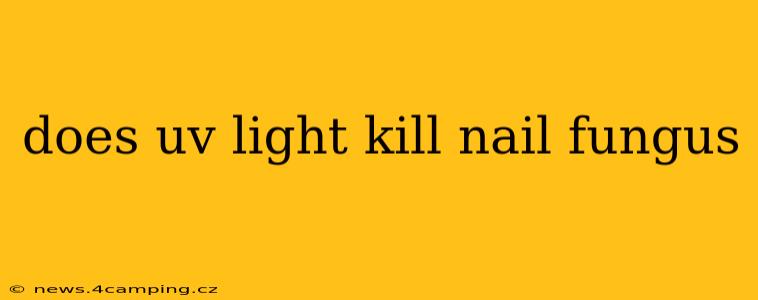Does UV Light Kill Nail Fungus? A Comprehensive Guide
Nail fungus, or onychomycosis, is a common and stubborn fungal infection affecting the toenails and fingernails. While many treatments exist, a question frequently arises: does UV light kill nail fungus? The short answer is: it's complicated, and not a standalone solution. While UV light can contribute to treatment, it's not a guaranteed cure and shouldn't be relied upon alone. Let's delve deeper into the science and explore effective strategies.
What is Nail Fungus and How Does it Spread?
Nail fungus is caused by dermatophytes, yeasts, or molds that thrive in warm, moist environments. These fungi invade the keratin in your nails, causing discoloration, thickening, crumbling, and sometimes pain. The infection spreads through direct contact with infected individuals or surfaces, such as shared showers or unhygienic nail salons. Underlying health conditions, such as diabetes or a weakened immune system, can increase susceptibility.
How Does UV Light Work Against Fungi?
UV light, particularly UVB, possesses germicidal properties. Its high-energy photons damage the DNA of microorganisms, preventing their replication and ultimately leading to their death. This principle is employed in various sterilization techniques, including the disinfection of surfaces and medical equipment.
Can UV Light Alone Cure Nail Fungus?
While UV light can damage fungal DNA, it's unlikely to penetrate the nail bed sufficiently to eradicate a deep-seated fungal infection. The nail acts as a barrier, reducing the effectiveness of UV light. Therefore, UV light alone is generally not considered an effective treatment for nail fungus.
What Other Treatments are Effective for Nail Fungus?
Several effective treatments are available, either over-the-counter or prescribed by a doctor:
- Topical antifungal medications: These creams, lotions, or ointments are applied directly to the affected nail.
- Oral antifungal medications: These pills are more potent and are often necessary for severe or persistent infections. They are generally prescribed by a doctor.
- Laser therapy: This is a relatively new treatment that uses lasers to target and destroy the fungus.
- Surgical removal: In severe cases, a doctor may remove the infected part of the nail.
The best course of action is always to consult a dermatologist or podiatrist for a proper diagnosis and treatment plan. They can assess the severity of the infection and recommend the most appropriate treatment strategy.
Does UV Light Help as Part of a Comprehensive Treatment Plan?
While UV light isn't a cure on its own, it could play a supporting role in a comprehensive treatment plan under the guidance of a healthcare professional. It may help to reduce the fungal load on the surface of the nail, potentially speeding up the healing process when combined with other treatments. However, this is not definitively proven and requires further research.
What are Some Home Remedies for Nail Fungus?
Several home remedies are purported to help with nail fungus, but their effectiveness is limited and often anecdotal. These include tea tree oil, apple cider vinegar, and Vicks VapoRub. It's crucial to consult a healthcare professional before trying any home remedy, as they can sometimes worsen the infection or interact negatively with other medications.
How Can I Prevent Nail Fungus?
Preventing nail fungus involves practicing good hygiene:
- Keep your nails clean and trimmed.
- Wear clean socks and shoes.
- Avoid walking barefoot in public places.
- Use a separate nail file for each nail.
- Treat any underlying health conditions that might increase your susceptibility to infection.
In conclusion, while UV light possesses antifungal properties, it's not a standalone cure for nail fungus. For effective treatment, consult a healthcare professional for a proper diagnosis and a personalized treatment plan that combines medical interventions alongside preventative measures. Don't rely solely on UV light, and always prioritize medical advice for managing this persistent condition.
